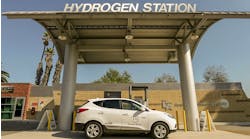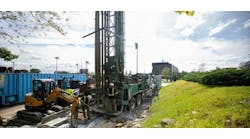To ensure that schools and universities are using energy efficiently, facility managers need to be able to accurately measure how much energy is being used, and monitor the conditions of the buildings and equipment that consume that energy.
“Facility managers must be expert collectors, organizers and assessors of facilities data if a school district is to have safe and well-maintained school buildings,” says The National Center for Education Statistics' Planning Guide for Maintaining School Facilities. “Collecting and reporting good data for use in analysis, trending and planning is a vital step toward good organizational management.”
Most education institutions have ample access to computers and the Internet; this has made a computerized maintenance management system (CMMS) an affordable and valuable tool for keeping track of an institution's building components and equipment, and how they are performing, as well as for assessing the level of maintenance required to keep the facilities functioning efficiently.
The planning guide recommends a CMMS for education institutions that have more than 500,000 square feet of facilities.
“At that point, facilities, assets, staff and scheduling become complex enough to warrant an investment in CMMS software, equipment and staff training,” says the guide.
The guide spells out some of the features that a CMMS should have.
“The CMMS should be network- or web-based, be compatible with standard operating systems, have add-on modules (such as incorporating the use of hand-held computers), and be able to track assets and key systems,” the guide states.
A desirable CMMS also will:
-
Acknowledge receipt of a work order.
-
Allow maintenance staff to set work priorities (such as emergency, routine or preventive).
-
Allow the requesting party to track work orders to completion.
-
Allow preventive-maintenance work orders.
-
Allow labor and parts costs to be captured on a per-building basis (or per-task basis).
The CMMS should allow a staff member from every building and campus in an education institution to have the ability to initiate a work request and check on its progress. The guide recommends that one person at each site be given “official” requesting authority so a school can maintain better oversight and avoid multiple requests for the same job.
The results of work orders should be entered into an institution's database so that facilities managers can use the data to better anticipate future maintenance and repair needs.
“Sophisticated CMMS enable the data to be analyzed in detail and at different scales (weekly, monthly and annual reporting, as well as by room, building and campus), depending on user need,” the guide says.
NOTABLE
A good CMMS work-order system will compile the following information:
- The dates a request was received and approved.
- A job tracking number and job status.
- The location of a job and its priority status.
- The person who requested the work, and the staff members assigned to it.
- The job's supply and labor costs.
Source: NCES, Planning Guide for Maintaining School Facilities.

